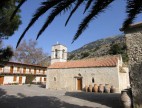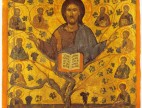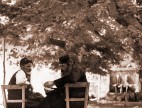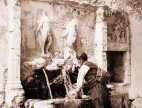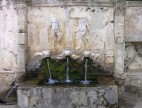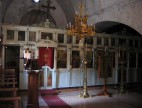Holy Monastery of Vrontisi
The monastery of St. Anthony at Vrontisi is located at the southern feet of the sierra of Psiloreites, at a distance of around 2 kilometres from the settlement of Zaros. Even though the first written references to the monastery date to the early 15th century, it is possible that it was founded much earlier. The late 16th and 17th centuries seem to have been the main period of its peak since many of its buildings were constructed then. The marble fountain with the unique sculpted decoration, which depicts the First Created humans, Adam and Eve, and the four personified rivers of Paradise as founts, was also built in the compound during this period. Examples par excellence of this peak are also the six icons of the great painter of the Cretan School, Michael Damaskinos, which had been commissioned for the monastery and, today, are found in the Museum of the Archdiocese of Crete in the church of St. Catherine at Heraklion. The two-storey building complex of the monastery develops to the north and west of the courtyard, in the centre of which rises the twin-naved catholicon, dedicated to St. Anthony and the Incredulity of Thomas. The original single-nave catholicon was extended to the west towards the end of the 16th century and subsequently, with the addition to the north of a spacious aisle, doubled in size. The castle-shaped, western-style belfry was also added in this same period. The original aisle has, in its interior, wall paintings of the 14th century while it constitutes a unique example in Crete of the representation of the Menologion in the main body of the church in place of the established Gospel cycle. From the surviving section of the menologion, the depiction of December with the celebrated saints and the Massacre of the Innocents as the final scene of the panel for the 29th of this month on the south wall is distinctive. The representation of Christ’s Supper at Emmaus on the semi-dome of the sanctuary apse surrounded by medallions of apostles, prophets and angels is also unique in Crete. The high quality art of Vrontisi, representative of the voluminous style of the beginning of the 14th century is thought to have been executed by a revocable painter from one of the great artistic centres of the period, Constantinople or, perhaps, Thessaloniki. Icons of the important Cretan hagiographer, Angelos, of the 15th century, one of which stands out, Christ as the Vine, are displayed in the catholicon.


